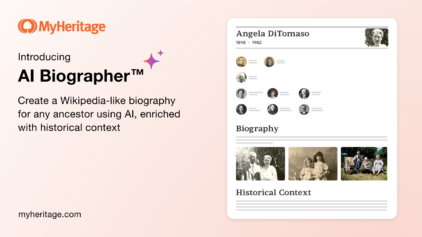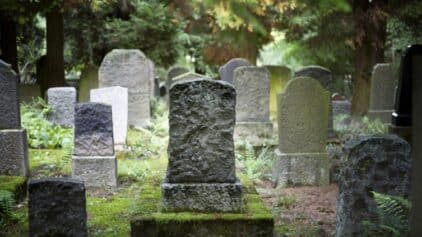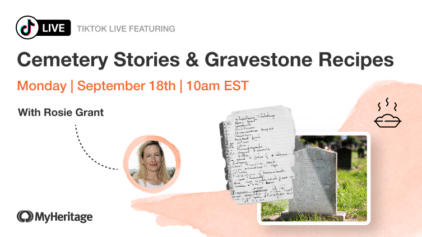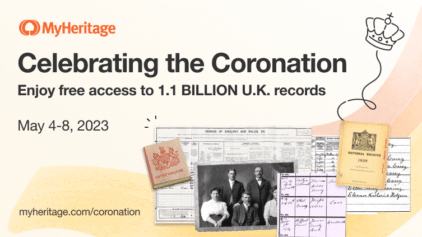Thanks Anita for letting us know. Could you please send us a link to the pageso we can resolve this:
Many thanks


 Tomorrow – April 2, at 12.01am – MyHeritage will receive the 1940 US Federal Census images. We will begin to upload them immediately to make them available to our users for free.
Tomorrow – April 2, at 12.01am – MyHeritage will receive the 1940 US Federal Census images. We will begin to upload them immediately to make them available to our users for free.
The index will also be provided and will be added to as the work is completed. Researchers around the world have been waiting for this census for 72 years, and we are proud to be part of this historical event.
I already have a list of history mysteries that I’m hoping the images will help solve. Of course, as a long time genealogist, I know that the more data we can access may be somewhat of a two-edged sword.
While we find more information and finally answer some questions, the new data often raises additional mysteries.
So, I guess I am hoping for both: Answers and more mysteries, which will give me more data to track down, and more leads to other resources that I’ve not yet considered.
What was so special about 1940?
The US was coming out of the Great Depression, the economy was improving, people were full of hope, and they didn’t know that in two years, they’d be at war. See a photo right of the January 1940 Senior Prom of Samuel J. Tilden High School (Brooklyn, New York). In less than three months, everyone in the photo would be recorded in the 1940 census.
What is a census?
If you are not already a genealogist, you’re wondering what all the fuss is about and you may even be wondering why the US conducts a census every 10 years.
First, let’s say that the concept of a census – basically, how many people are in a certain area – is rather ancient. Many ancient societies conducted censuses to provide information – and the names – of people for religious and economical reasons. In more or less contemporary times, governments instituted censuses to tax people. In today’s modern times, it is necessary for government to be able to plan for representation, for schools, infrastructure and so many other reasons.
In any case, genealogists love all kinds of censuses – from the reviski skaski (Russian) to the US Federal and all others. We learn so much about our families from them, depending on the questions asked (which change from census to census). From that information, we can then search for detailed birth, death and marriage records. We can go to city directories (the precursor to telephone books), military records and draft registrations, social security data and more.
See Mark Olsen’s World Vital Records blog post (“Why all the hype about the census?”) here.
My mother was a census-taker for the 1950 and 1960 events. The ED she covered was in the very large apartment community of Parkchester in the Bronx, New York. I remember the big sheets she worked with and, in 1960, watched her tabulating results. It was all too complicated for me, but it was a good lesson in how those things were done. This was long before I become interested in family history.
What data can we find in the 1940 census?
The 1940 asked many questions of each household and some extra ones for a certain percentage of respondents. General questions will provide the names (for each household) of each person and the relationship to the head of household, gender, age, occupation.
Each sheet offers the state, county, city, and is sorted by enumeration district (ED). Of course, the street name, building address and the apartment number (if a multi-family building) is also given. View a blank 1940 census form here.
For more information on the general questions, supplementary questions and other details from the National Archives website, click here.
That infamous ED number!
To find information in the 1940 census, researchers need to know the enumeration district for the neighborhood their families lived in. In many cases, it is the same as the 1930 Census ED, so if you have that ED, you may find what you need quickly. However, the period from 1930-1940 was one of expansion: cities expanded and incorporated adjacent areas, rural areas became more populated and new population areas were created.
The expansion of cities and annexation of areas is presented in Mark Olsen’s post here as he tried to find the ED for Venice, California. As a former Los Angeles resident, I knew Venice well – for its informal seaside atmosphere, beach and boardwalk. Mark couldn’t find its ED, even with a visit to Steve Morse’s site and his ED calculator. It turned out that Venice was annexed by Los Angeles in 1925. Mark isn’t alone and many people will find themselves just as frustrated. Mark’s advice: If you can’t find an ED for a place you know exists, check all sources for that place and read its history. That’s how he found the Venice information.
The timing of the 1940 census release couldn’t be better for me. Just two days ago, I received an email – totally unexpected and out-of-the-blue (thanks to JewishGen‘s Family Finder) – from a Merlin cousin, confirming a family “story” to be fact and providing many bits of information for a focused search. From the details provided, I now have several locations to search and learn how our family’s paths have crossed since the early 1900s.
Your ancestors’ information is in the 1940 US Federal Census. Find their records at MyHeritage for free! Stay tuned for more announcements. You can find the 1940 Census records at www.myheritage.com/1940census.












Anita Drexler
September 21, 2012
I found large errors in the transcription of some of the pages of the 1940 census when looking for my family members. In one case the transcriber listed the ENTIRE page of names for the parents and children for my relatives when in fact the actual page CLEARLY deliniated each family INDIVIDUALLY.